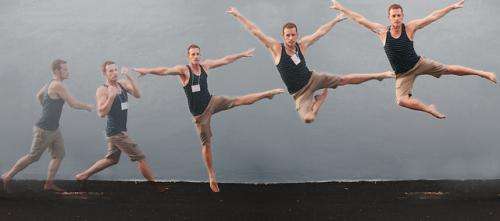Motion capture examines dance techniques

WAAPA dance students are set to take part in a world-first biomechanical study that tracks their training, technique and injuries as they develop as professional performers.
The long-term program will use motion capture technology to analyse the techniques of ballet and contemporary dance students and aims to reduce injuries and improve the health of the performing artists.
ECU postdoctoral scholar Luke Hopper, who heads up the project, says he hopes to be able to compare the techniques of professional and student dancers.
"We can track them as they develop, as they grow," he says.
"[We can] see who doesn't get injured and if there are any risk factors associated with injury through the pathway that we can then hopefully address and see if we can prevent them in future cohorts."
The project follows Dr Hopper's PhD research on the injury rates, perceptions and landing mechanics of dancers on different dance floors.
He found that when professional dancers toured to different venues, the stages often didn't comply with the European standards.
"It wasn't so much the hard floors that came up as being a problem but it was when the floor was inconsistent, so there were hard and soft patches across stage and the dancers couldn't really pick what they were going to land on," he says.
Pressure on ankles considered
Dr Hopper recently published a paper in the Journal of Science and Medicine in Sport that used a motion capture laboratory to measure the force exerted on dancers' ankles when they land.
The study captured WAAPA students landing at 250 frames per second and found that a harder landing surface means the muscles have to work harder to resist the forces from the ground.
"What we're hypothesising is that if you were to hit the floor and your foot wasn't oriented in the way you were expecting then the interaction of the forces and the foot could cause you to sprain your ankle," he says.
Dr Hopper says is it also common for dancers to suffer tendon injuries, with the tendons in the ankle becoming overused, inflamed and sore.
"Because dancers spend so long jumping around on floors that could be another factor that a floor could influence," he says.
Dr Hopper hopes to better understand how dancers might be able to modify their training and structure their leg muscles to make them more adaptable to different dance floors.
He says he is looking forward to determining how the different floors at WAAPA behave including their age and how they are used.



















